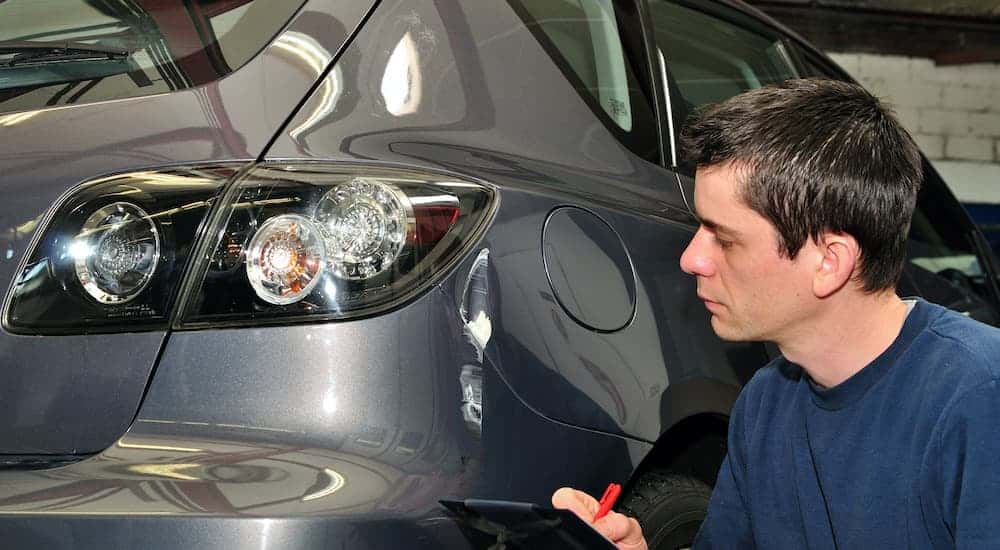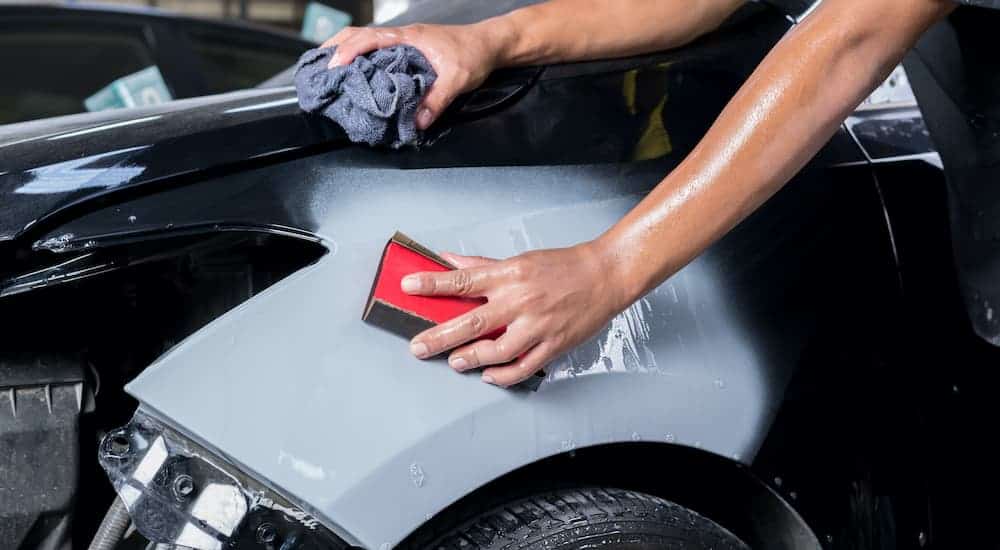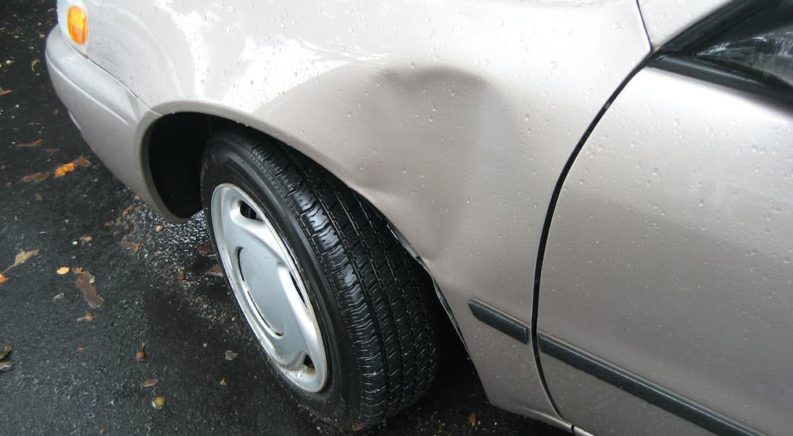No one wants to deal with body damage to their car, truck, or SUV, forcing them to search out an “autobody repair near me” in order to get your vehicle back up and running in working shape. However, when it does happen, sometimes the damage can be repaired on your own, or some steps can be taken to minimize the costs of the damage. So if you’re wondering, “how do you fix a damaged fender?” Well, sometimes it can be as simple as replacing a part or using a hammer to bump out a ding, or as complex as having to go through a buff and repaint procedure.
Can You Repair A Fender On Your Own?
The answer is yes… yes, you can. The process is neither easy nor particularly convenient because a lot of it depends on the make, model, and type of vehicle that you have. Realistically, older model cars made with metal might be easier to repair if you have the proper tools to bang out any dings or dents. But you would then have to undergo the process of sanding down the metal, priming, and painting over the repaired area of the fender.
It’s also possible to repair thermoplastics and fiberglass damage as well, but it usually requires completely replacing the part if the fender has undergone more than just a scratch or a dent. If it’s cracked or busted and has a hole in it, then you’ll need to fill the gap, which can be quite complex or simply require replacing an entire section of the vehicle altogether.

How To Repair A Fender With A Heat Gun
If you have the right know-how and materials, it’s actually possible to repair a fender on your own. Although, depending on the make and model of your vehicle, it’s probably advised you seek out a professional for help if you’re not sure what you’re doing. This is a mostly safe and easy way to repair fenders if the damage is relatively minor.
Step 1: If you have a heat gun, which you can pick up from a local hardware store, or even a blow-dryer with a high-heat setting, you can sometimes buff out dents without having to spend an arm and a leg on repairs.
Step 2: For minor plastic dents where the paint isn’t chipped or scuffed, simply hold the heat gun or blow-dryer over the dented area for several minutes until the plastic heats up.
Step 3: Be sure to wear gloves. Proceed to rub your hand around the heated area of the dent to see if the plastic has warmed up. If it has, then from inside of the vehicle’s frame – on the opposite side of where the fender has been dented – push on the indented section with your hand until it pops back into place.
How To Repair Small Holes In A Fender
If the body panel has a hole rather than a dent, the repair process is slightly different. However, you still don’t necessarily have to replace the entire fender or have costly bodywork done to fix the issue. For small holes, there’s the option to use body fillers such as Bondo, smoothed cement, or even epoxy. If all goes well, then you should be back in business with a repaired fender.
Step 1: Make sure you have a stiff scraper (typically wide/thin enough to work around the area where the damage is done), a plastic spreader, high grit sandpaper, body filler, primer, and paint. You’ll need to chip, sand, or peel away any protruding or loose materials around the area where the hole or gap is located.
Step 2: Sand down the surrounding area where the damage has been done to remove the paint or any remaining primer.
Step 3: It’s advised to use a screen or shield placed behind the gap to work as a hoist for the filler. You can use glue or any kind of adhesive to keep the backer in place.
Step 4: Apply the filler, and use the scraper to smooth the filler over the hole until it’s flush with the rest of the fender.
Step 5: Wait for the filler to completely harden, and then apply the primer and paint.
How To Replace A Damaged Fender
However, for major damage, you will have to replace the entire body panel. Fortunately, this is a relatively simple process, and you can use a toolkit with the appropriate tools to unscrew the panel from the vehicle and replace the entire fender.
Step 1: First, check to see how the fenders are attached to the body. Find a maintenance manual or simply check underneath the area where the fender is connected to the body of the vehicle for bolts, clamps, or screws. You’ll need to find what’s holding the panel in place to detach it.
Step 2: You can either check with your local dealership for a replacement fender or search online for a shop that carries a fender for your vehicle. It’s probably wise you do this before you actually detach the fender on your vehicle.
Step 3: If the replacement fender is a different color than the main body of your vehicle, you may want to visit a paint or detail shop. While you can paint the part yourself, it is usually better to let a professional handle this for a perfect finish.

How Much Do Fender Benders Cost To Repair?
Just like how replacing a fender can be easy or hard depending on the make and model of a vehicle, a damaged fender doesn’t carry equal costs across all vehicles. Economical sedans and compacts typically have lower costs for repairing a fender bender, a scratch, or a dent. It’s still not cheap, not by any stretch of the imagination, but it’s far less expensive than what it costs to repair luxury sedans, trucks, and SUVs.
The repair costs can also vary depending on the severity of the damage and where it’s located. Front or rear fenders over the wheels are sometimes prone to dings or scratches and will usually run you several hundred dollars to repair. Dents or bruises in the quarter panels can also cost several hundred to repair or replace.
More serious work, such as gashes in the panels, multiple dents, or framework damage extending from the bumper, can sail over into thousands of dollars, depending on the make and model of the vehicle, as well as the extent of the damage.
A lot of times, the costs are located in the parts and labor, which is what racks up in hourly costs for the damage and can sometimes take multiple days to complete. This will sometimes take several hundred dollars worth of damage and extend it into several thousand dollars in repairs, depending on where you go to get the repairs done and what kind of vehicle is being repaired.
Why Does It Cost So Much To Repair Fenders?
You might be wondering exactly why it costs so much to repair a fender bender? If it’s just a scratch, you should be able to buff it out with a little polish and spit-shine… right? Wrong. Back when vehicles used steel for most of the framework, it was common to sand down the area where the damage occurred, use a hammer to ding out the dent, buff the metal, prime it, and then apply a matching coat of paint over the damaged area.
However, times have changed and so have materials. Most vehicles are made of aluminum or fiberglass, while some are made of plastics, so depending on what your vehicle is made of will determine how much it will cost to either repair or replace the materials where the fender was damaged. Still, while these parts can be more difficult to repair, they are also less prone to damage and do a much better job standing up to rust.

